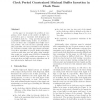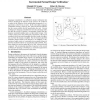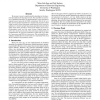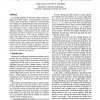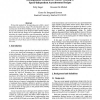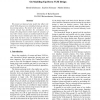ICCAD
1994
IEEE
14 years 26 days ago
1994
IEEE
ICCAD
1994
IEEE
14 years 26 days ago
1994
IEEE
ICCAD
1994
IEEE
14 years 26 days ago
1994
IEEE
Language containment is a method for design verification that involves checking if the behavior of the system to be verified is a subset of the behavior of the specifications (pro...
ICCAD
1994
IEEE
14 years 26 days ago
1994
IEEE
We present a loosely coupled parallel algorithm for the placement of standard cell integrated circuits. Our algorithm is a derivative of simulated annealing. The implementation of...
ICCAD
1994
IEEE
14 years 26 days ago
1994
IEEE
ICCAD
1994
IEEE
14 years 26 days ago
1994
IEEE
ICCAD
1994
IEEE
14 years 26 days ago
1994
IEEE
{ Hierarchy plays a signi
cant role in the design of digital and analog circuits. At each level of the hierarchy it becomes essential to evaluate if a sub-block design is feasible ...
ICCAD
1994
IEEE
14 years 26 days ago
1994
IEEE
ICCAD
1994
IEEE
14 years 26 days ago
1994
IEEE
We present an improved data model that reflects the whole VLSI design process including bottom-up and topdown design phases. The kernel of the model is a static version concept th...
ICCAD
1994
IEEE
14 years 26 days ago
1994
IEEE
Several industrial FPGA routing architectures have been shown to have no efficient routing algorithms (unless P=NP) [3,4]. Here, we further investigate if the intractability of th...
